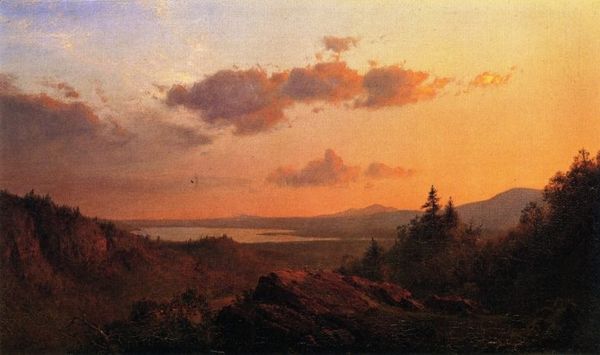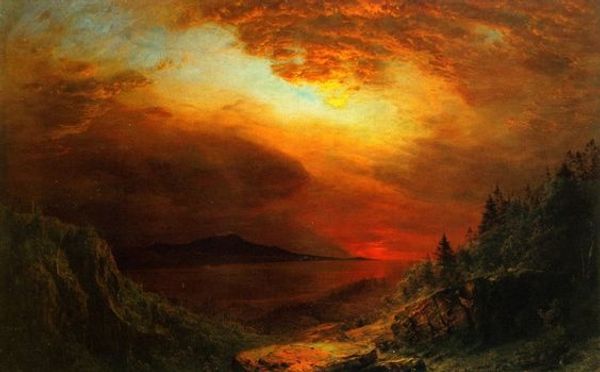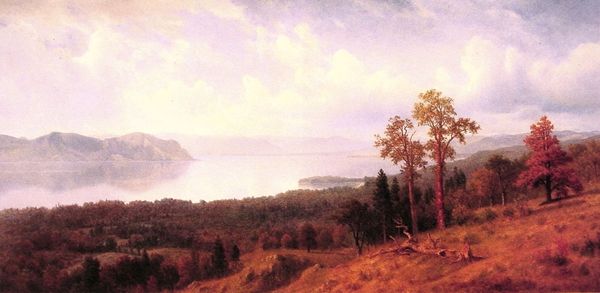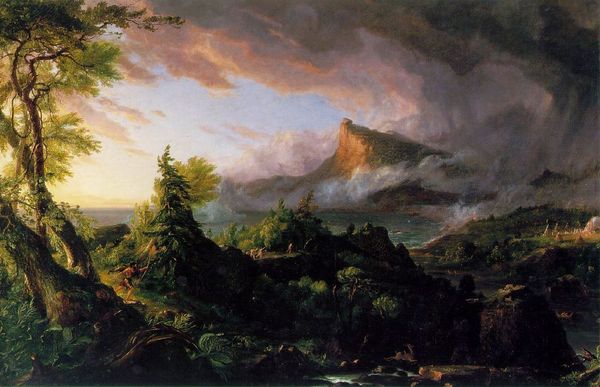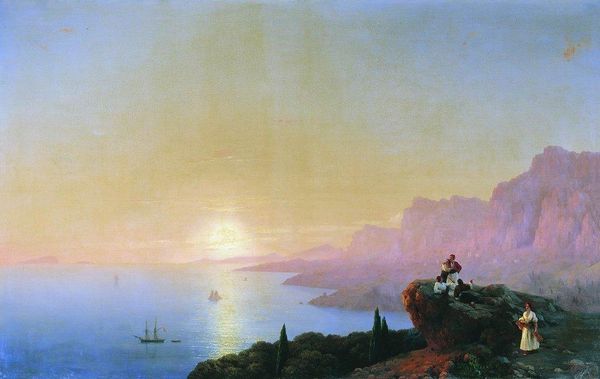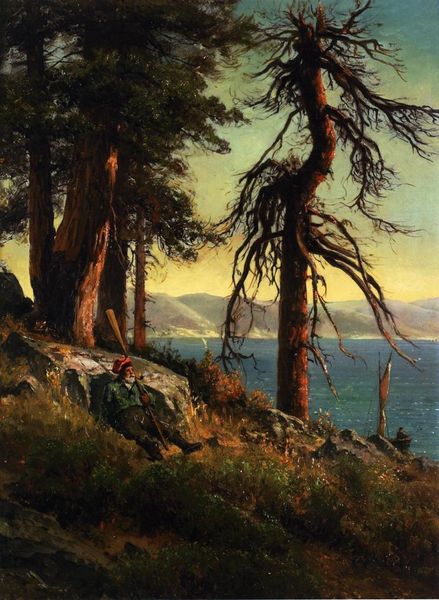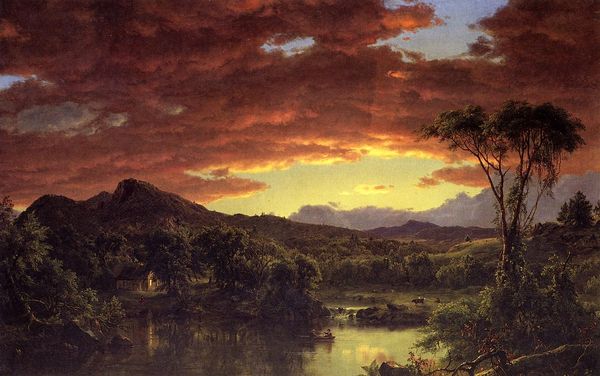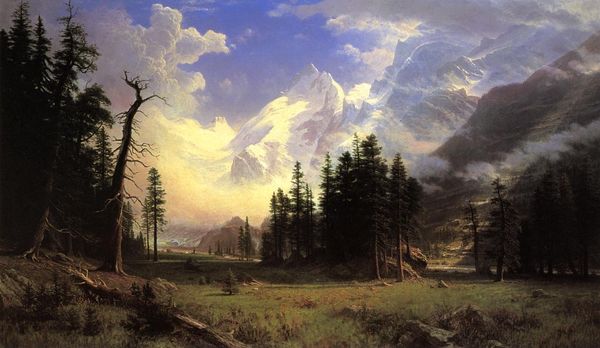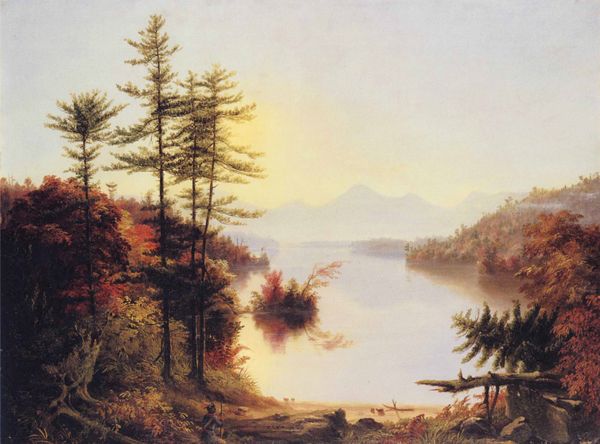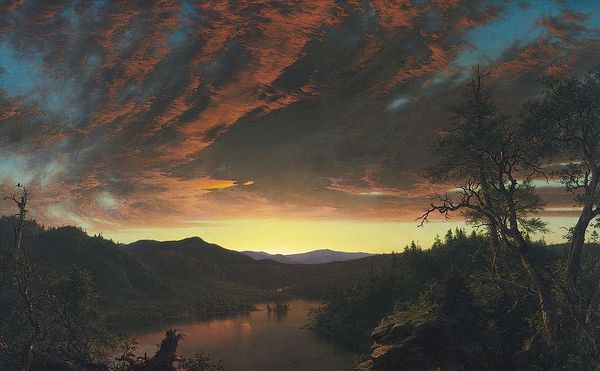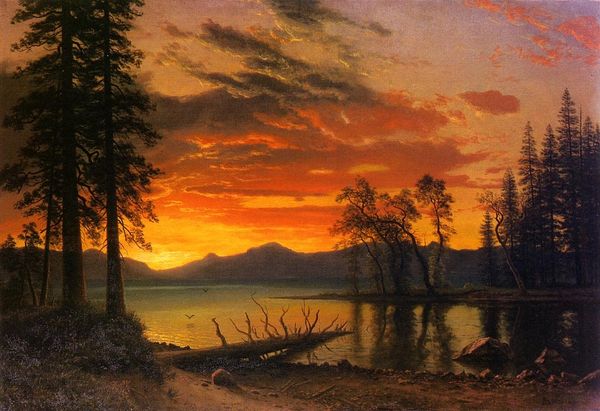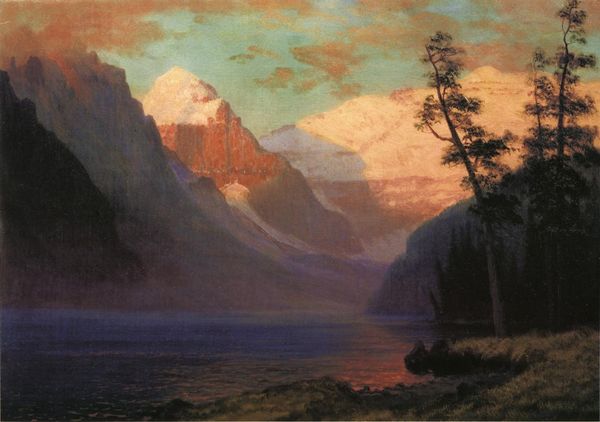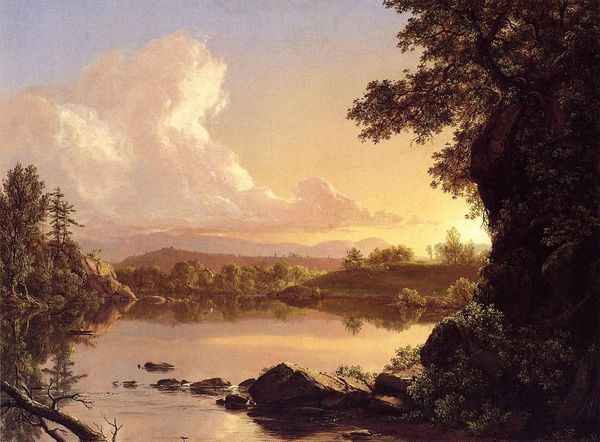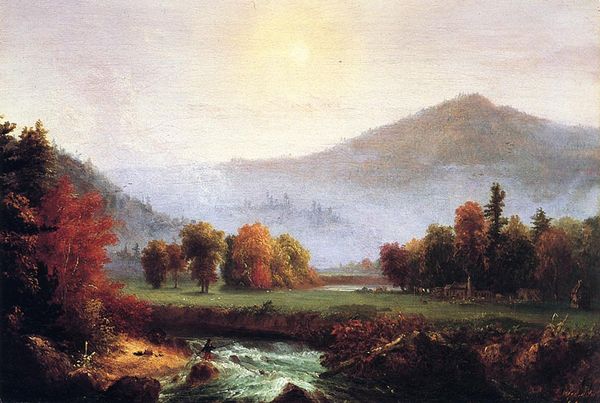
painting, plein-air, oil-paint
#
tree
#
sky
#
painting
#
atmospheric-phenomenon
#
plein-air
#
oil-paint
#
landscape
#
romanticism
#
cloud
#
nature
#
sublime
Copyright: Public domain
Curator: What a beautiful and dreamlike view. Editor: It is quite captivating. Frederic Edwin Church's "Above the Clouds at Sunrise" is a sublime landscape, rendered with oil paint. The way he handles the light is truly remarkable. Curator: The ethereal quality certainly strikes me first. I am particularly interested in Church's selection of oil paint. He’s employing a very thin application technique here; it’s interesting how this deliberate choice contributes to the light, airy feeling of the piece. And, of course, this connects to the entire plein-air tradition—these landscapes weren’t just "discovered" in some mental vacuum but physically encountered in the world, with their corresponding social histories of observation and extraction. Editor: Agreed. The scene almost transcends a mere observation, pushing toward something akin to the spiritual. Its historical moment certainly influences our viewing experience; a public ravenous for images of untouched, "New World" grandeur found itself represented within such paintings. The grand scale, regardless of actual dimensions, reinforces this intended experience. I wonder what his patrons thought. Curator: Perhaps they responded to this tension as well—a tension arising, specifically, from the painting's manufacture and sale within a booming art market, the very thing this painting seeks to distance itself from through its lofty subject matter and invocation of the sublime! Was the raw material ethically sourced? How was the landscape and nature perceived by the colonizer as it was rendered on canvas? The fact that he made use of plein-air underscores Church's artistic background—a movement dedicated to directly confronting nature in its immediate form. The labour needed to extract the raw resources needed for the oil paint also must be recognised. Editor: Interesting food for thought. The work, as a result, lives in two spaces at once: The social space it now occupies and the social space from where it’s taken. The romantic depiction can almost make one forget the reality of resource extraction it obscures. Curator: Right, and it is a testament to the way our encounters with nature are continuously mediated by art production as well. Editor: Indeed. I find this new point of view to be fascinating. Thank you for elaborating!
Comments
No comments
Be the first to comment and join the conversation on the ultimate creative platform.
